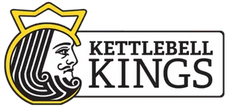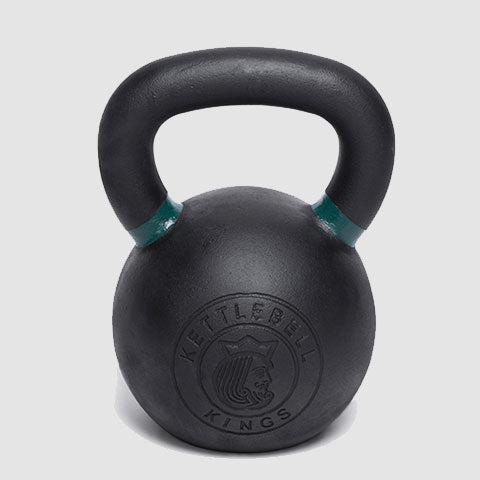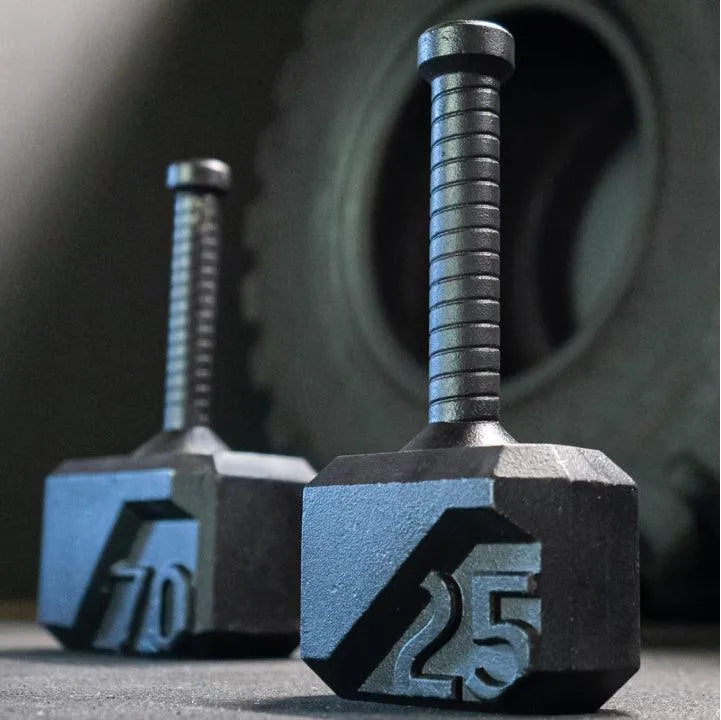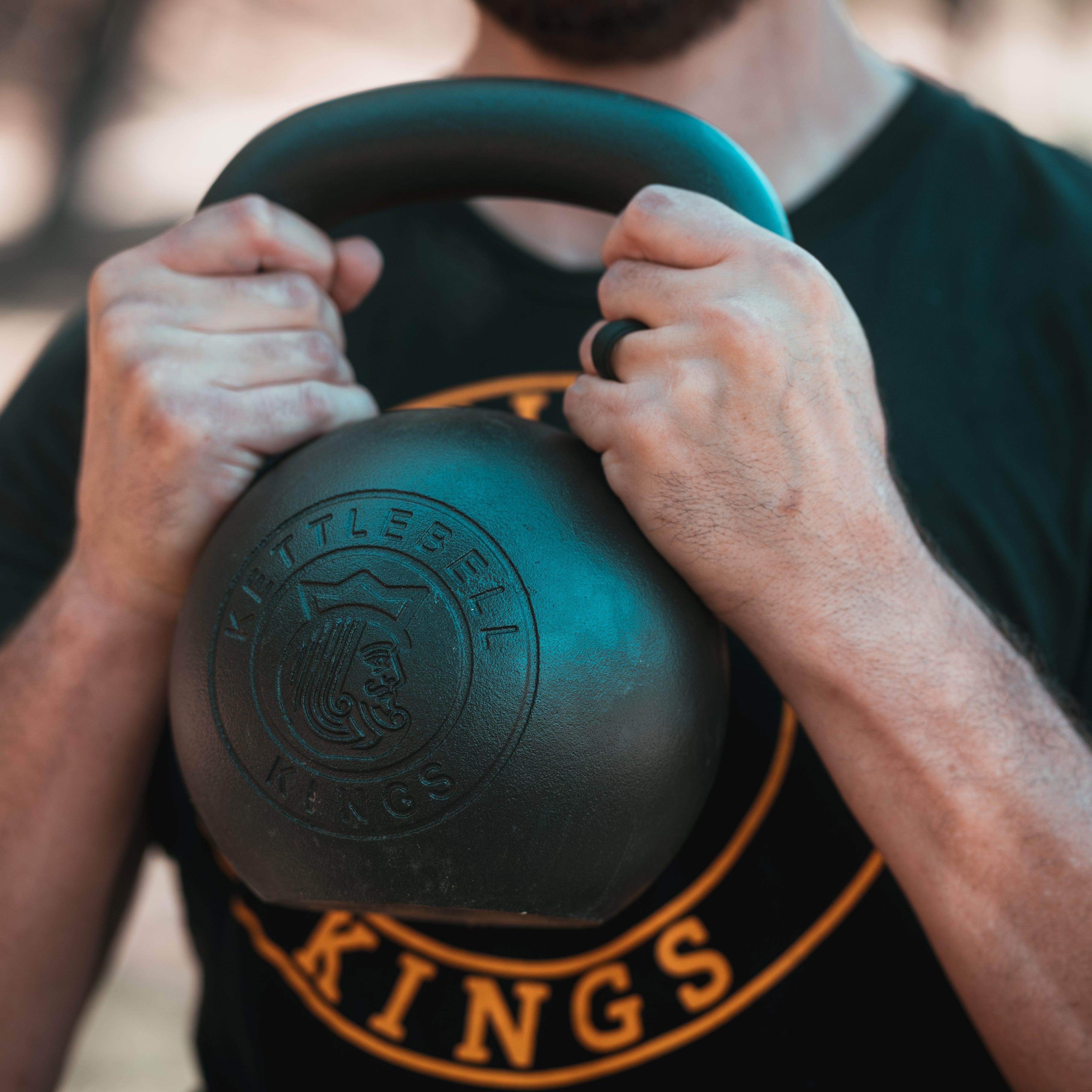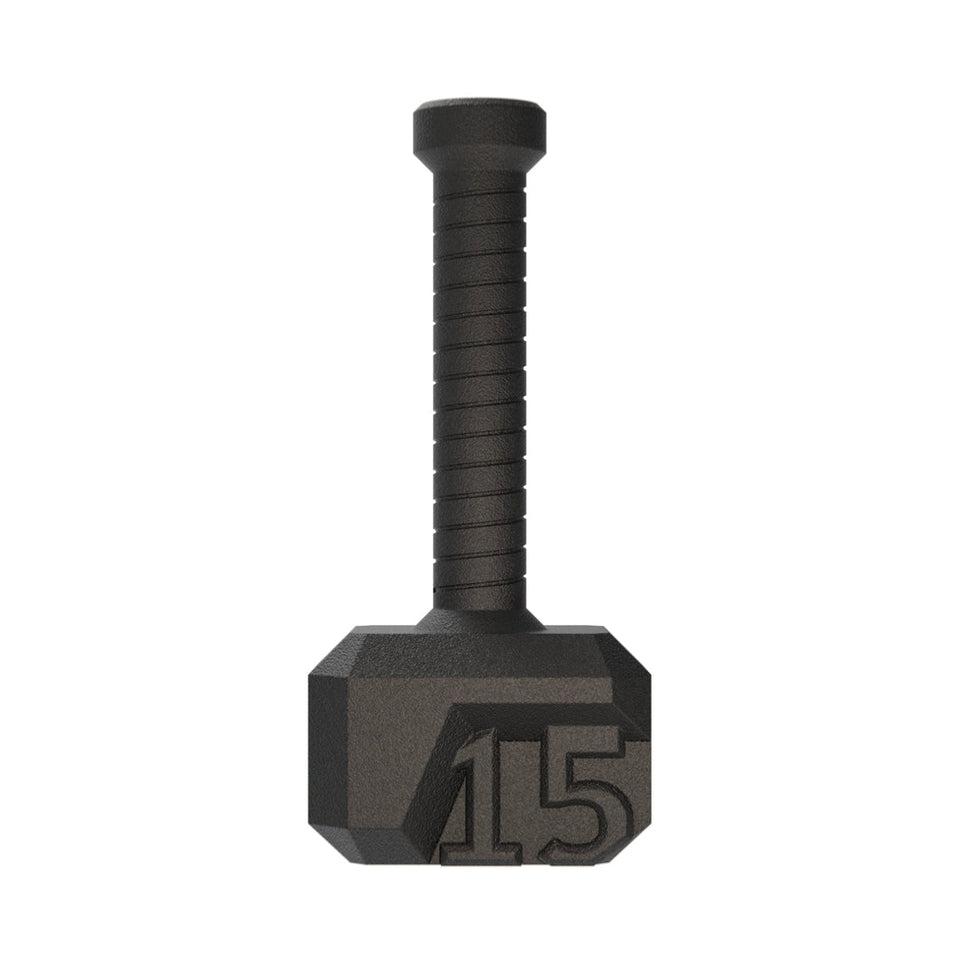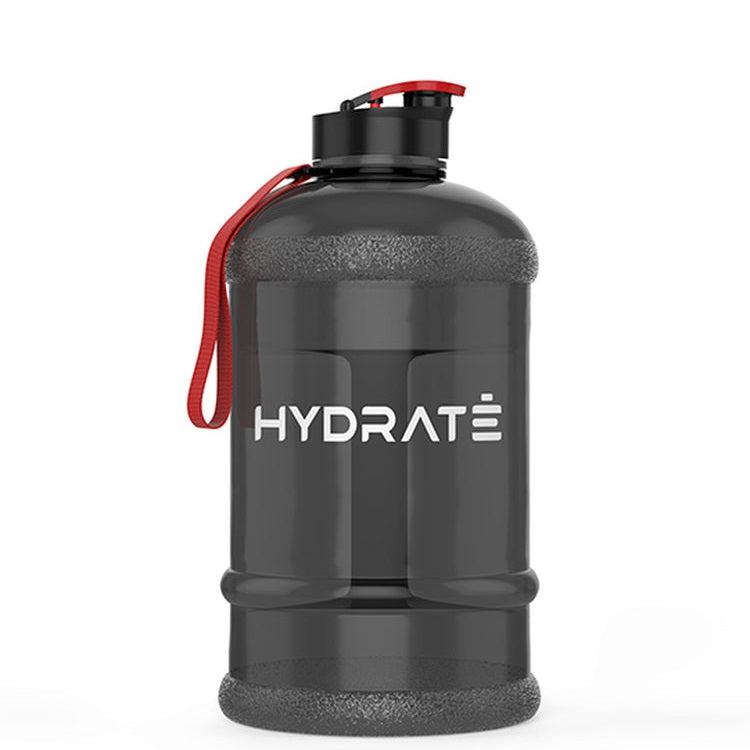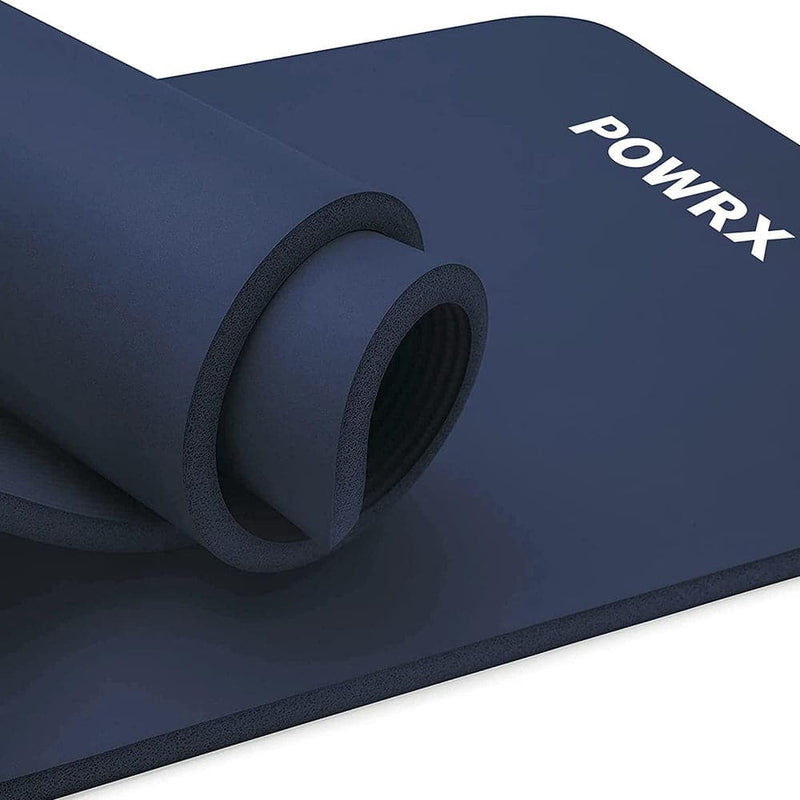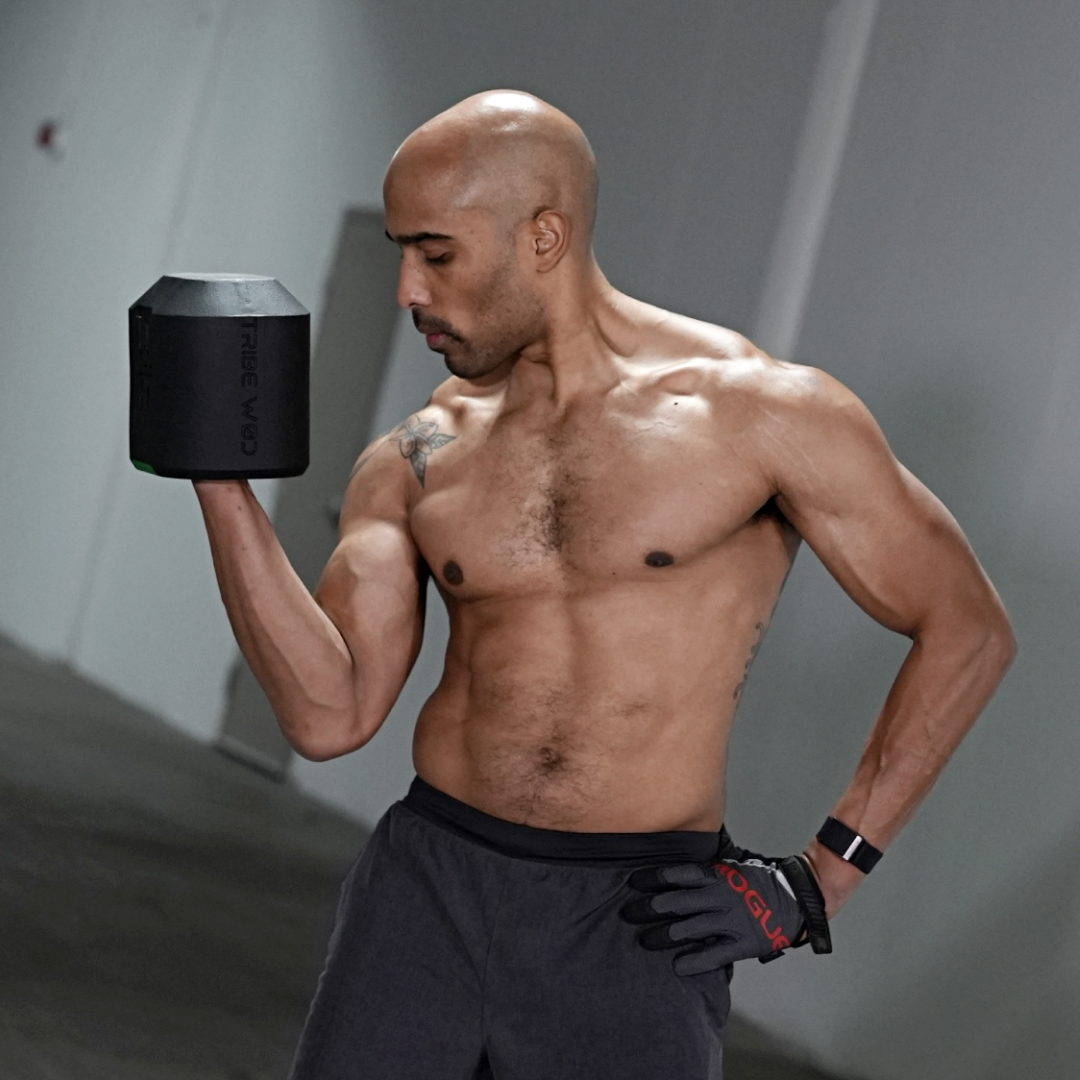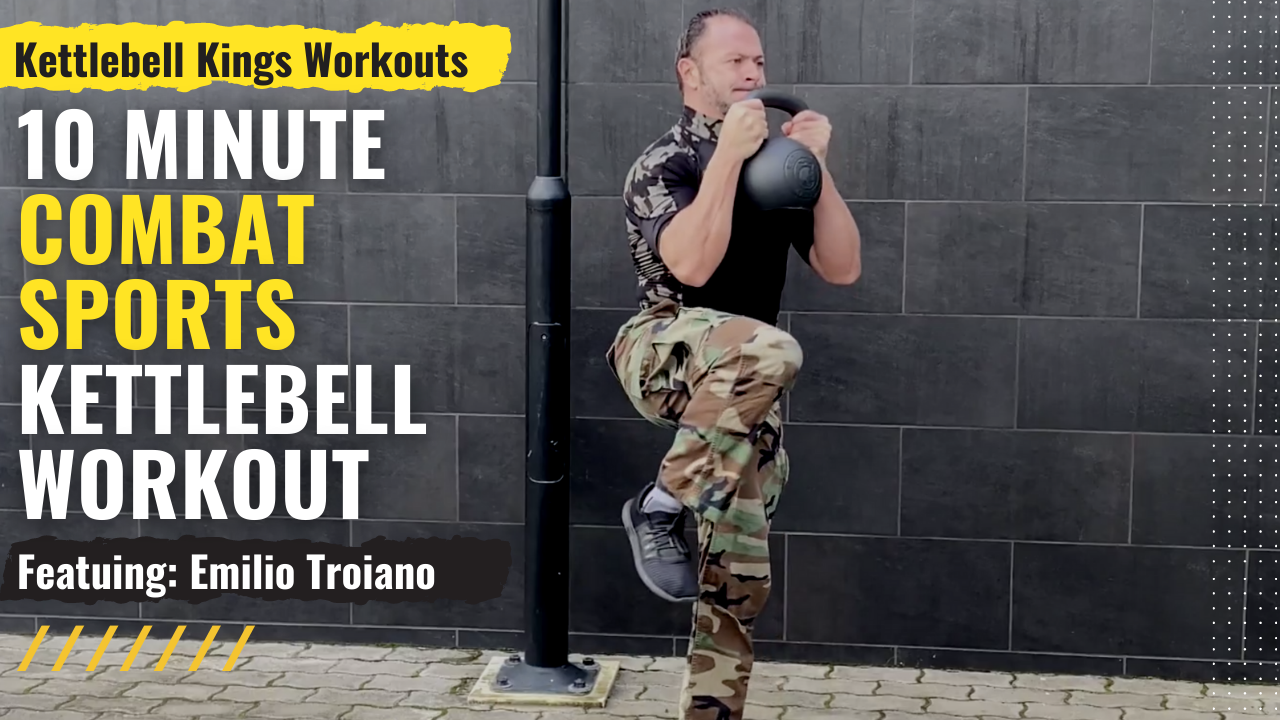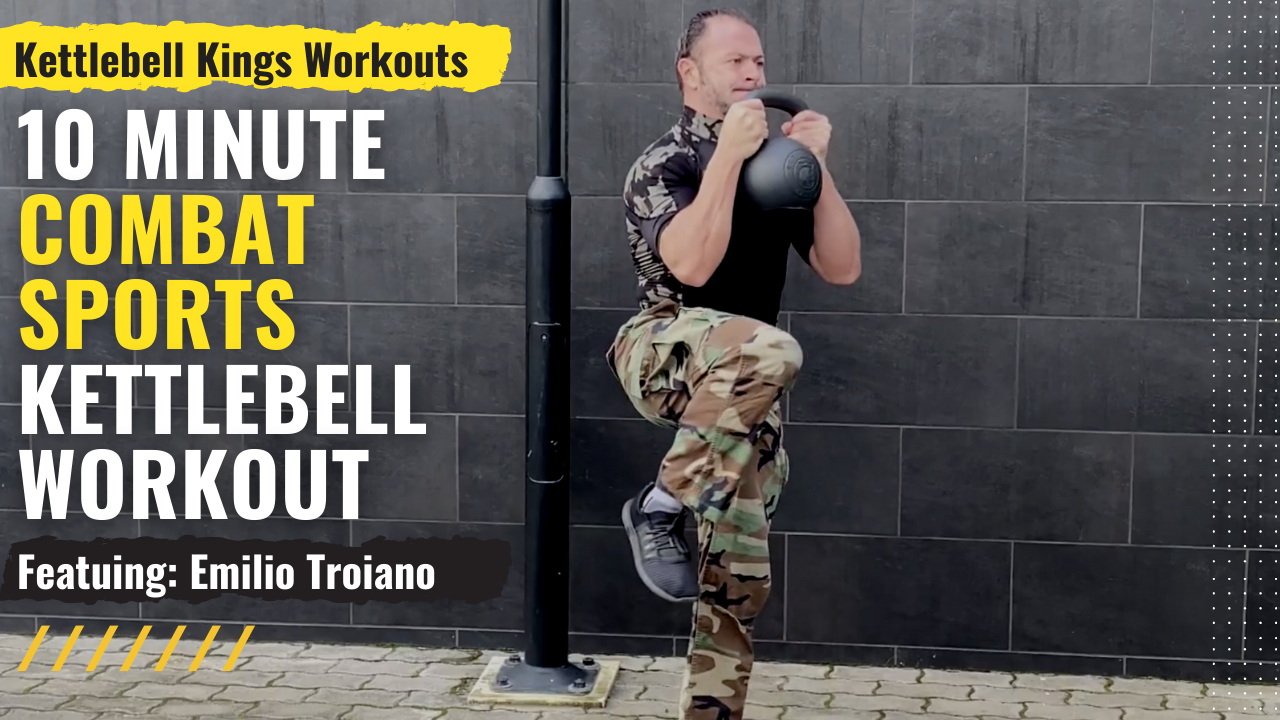A total body kettlebell workout is simple to do, whether you’re working out at the gym or home. This type of workout will build full body power and strength. At the same time, a full body kettlebell workout is also great for weight loss with it’s high caloric burn. A combination of exercises include the dead start clean to catch, squat thrust, and a swing to catch with a reverse lunge. Here, we give you the full breakdown of how to do each kettlebell exercise and how to cycle through them for a full workout.
Exercise 1: Deadstart Clean To Catch
Our total body kettlebell workout will begin with the compound exercise, deadstart clean to catch. Perform the deadstart clean as you would normally perform the exercise. The catch part of the motion just means that you pull your elbow back and you catch with the other hand. You’ll be exploding up, pulling back, and then pausing before returning to a starting position.
During the catch, pull your elbow back, similar to how you would do a single arm row. The word ‘catch’ here refers to catching the kettlebell on the other hand, just under the weight. To begin, have the kettlebell on the ground, between the legs. Feet should be shoulder width apart, or slightly wider, with the knees slightly bent. Then, tip forward at the hip, grabbing the kettlebell horn with the right hand. Explode up, activating your hamstrings and glutes to perform hip extension. Then, the muscles of your shoulders (rear deltoid), back, and biceps will pull the weight to the catch position, where you catch the kettlebell in the other hand.
Once you ‘catch’ the weight, pause for a second before controlling the resistance and bringing the weight back down. Throughout the duration of the movement, you should be activating your core muscles. Specifically, this includes your transverse abdominis, the deep muscle that wraps around your spine for support. In addition to being an excellent total body exercise, it also is a good practice for the clean and understand the trajectory of the bell.
Rather than switching hands for each repetition, perform the exercise for 30 seconds with your right hand. Then do another set of 30 seconds lifting the weight with your left hand.
Exercise 2: Squat Thrust
For a squat thrust, grab the kettlebell by the horns and hold it just under your chin, in front of your chest. The first part of the movement is a goblet squat.
As you finish fully extending through the knees and hips, begin pressing the bell up and over your head, like a shoulder press. This exercise can also be called a thruster, squat press, and more. The total body movement activates the glutes, quads, and hamstrings of the lower body. Then, as you press the bell, the upper body will work, activating the deltoids, pectorals, traps, and triceps. The combination of the squat and press motion make this not only a great total body strength exercise, but also a very functional one. A functional workout includes compound movements in multiple planes of motion. Further, squatting and pressing free form happen all the time during activities of daily living. Additionally, the movement is simple to understand- making it a great at home exercise for even the beginning exerciser.
Exercise 3: Swing To Catch With A Lunge
The third exercise in this full body kettlebell workout includes a kettlebell swing into a catch with a lunge. This means you’ll be doing the swing between each lunge. This exercise is a bit more complex, so make sure you avoid the common mistakes most people make during a kettlebell swing. If you still don’t feel comfortable or as though you’re getting the right technique during the swing, that’s okay. Instead you can do a deadlift (instead of the swing). This will allow you to still target the gluteal muscles and hamstring complex. If you opt for the deadlift, make sure you don’t go into full knee extension, where you lock out the knees. Conversely, make sure you don’t do too much knee flexion, making the movement more of a squat instead of a deadlift. Maintain a good hip hinge.
Your feet should be hip width apart and with a slight bend in the knees for the starting position of this common kettlebell exercise. Then, grab the weight by the horns and perform the swing (or deadlift). After swinging back down, bring the weight back up into a catch. From there, you’ll do one reverse lunge on the right foot. Step back to the starting position, feet shoulder width apart and pointing straight ahead. Do the swing and catch again. After the catch this time, step back with your left foot. This way, you’re alternating the backstepping lunge leg with each repetition.
Total Body Kettlebell Circuit
Put all three of these exercises together for one full power, strength, and caloric burn workout. Rather than number of repetitions, timing the exercise is more practical and translates similarly to doing 8 to 12 repetitions per exercise. Therefore, perform each exercise for 30 seconds. Then rest 30 to 60 seconds before moving onto the next total body kettlebell exercise. As you begin this total body strength training workout, use longer rest intervals. And, as you gain strength and endurance, you can reduce the amount of rest (progressing from 60 seconds of rest to 30 seconds). Similarly, the first time you do the workout, especially if you’re new to this type of program, aim to complete three rounds. This means doing each exercise, one after the other, for three sets. As you progress, you can increase the duration by performing five rounds of each exercise.
Mahoney, E. A. (2021), Anatomy of a squat. EMAC Certifications. https://www.howtobeapersonaltrainer.com/s/stories/anatomy-of-a-squat
About Erin Mahoney, MA, CPT

